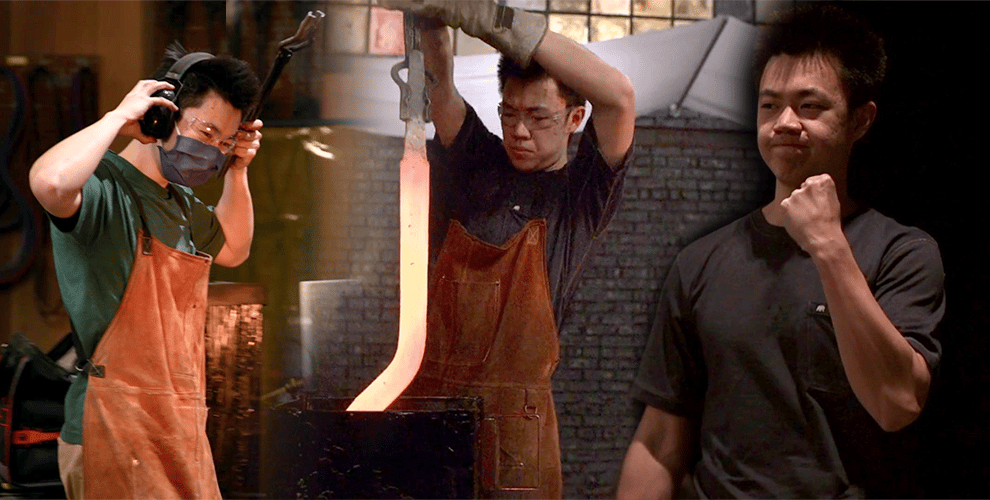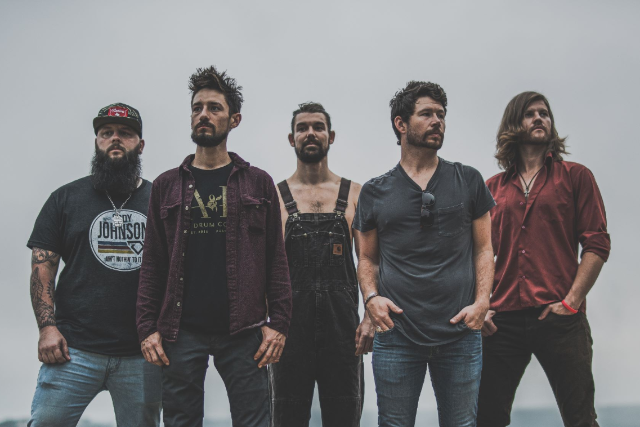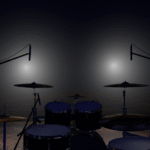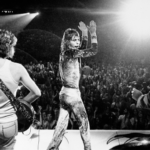In the rolling hills of Waitakere, west of Auckland, New Zealand, a unique musical partnership has been quietly crafting some of the most compelling alt-country music to emerge from Aotearoa. The Bads is a vehicle for the musical escapades of Brett Adams and Dianne Swann. Created under the fiery skies of Waitakere, Aotearoa – New Zealand. What makes their sound so distinctive isn’t just their seamless harmonies or Brett’s intricate guitar work—it’s the alchemical process through which two seasoned musicians transform life experiences, literary influences, and deep musical knowledge into songs that resonate with both critics and audiences.
The Foundation: A Partnership Forged in Fire

The musical chemistry between Brett Adams and Dianne Swann didn’t happen overnight. Back in the noughties, Dianne Swann and Brett Adams were on their “Big OE” in London and formed their first official musical partnership as The Julie Dolphin. Their London years weren’t just a formative period—they were a crucible that would define their approach to music-making for decades to come.
The Julie Dolphin received glowing accolades from the tough British music press for their album Lit and 2 EPs and toured extensively in the UK headlining their own shows, opened for Green Day, Oasis and Radiohead among others. More significantly, these experiences taught them how to survive in one of the world’s most competitive music scenes, lessons they would later apply to crafting their signature sound as The Bads.
The duo’s return to New Zealand in 2003 marked not just a geographical shift, but a creative renaissance. Time has a way of smoothing over the rough edges of course, and England’s loss has become New Zealand’s gain. Brett and Dianne have applied the same tenacity and focus that served them so well overseas to carving out a niche for themselves and their country-inflected music back on home soil.
The Creative Process: Where Songs Are Born

One of the most fascinating aspects of The Bads’ creative process is how naturally and spontaneously their songs emerge. Swann and Adams (whose stylish guitar playing keeps him in demand with artists like Gin Wigmore and Tim Finn) have a very comfortable, equal writing relationship, and it seems their West Coast home is an oasis very much conducive to song creation.
Dianne Swann describes moments of pure creative flow that feel almost mystical: “It seems to be on the weekends, first thing in the morning,” Swann laughs, thinking about when she’s most productive. “I have quite a vivid memory of See the Light – it was a Sunday morning, and Brett went to the shop, about five minutes down the road, and I’d pretty much done it by the time he came back.
This kind of spontaneous creation speaks to the deep musical understanding between the two. They’ve developed an intuitive creative language that allows ideas to flow seamlessly between them, whether they’re in the same room or working on pieces separately that later fit together like puzzle pieces.
Musical Archaeology: Mining the Past for Present Gold
The Bads’ approach to songwriting often involves what could be called “musical archaeology”—digging up old musical fragments and reimagining them in new contexts. The first taster to ‘Losing Heroes’, Shelter Love, was different for the duo in terms of structure and arrangement. The song, written together at the same time is what Swann considers “a bit of patchwork.”
“One piece of music, the chorus, which I had the guitar line and the chords to, I think I had that when I was 18,” Adams adds. This willingness to revisit and reimagine older material demonstrates their understanding that good music is timeless, and that a melody conceived decades ago might find its perfect expression in a contemporary context.
The Art of Tribute: Weaving History Into New Narratives
Perhaps nowhere is The Bads’ sophisticated approach to songcraft more evident than in their ability to pay homage to their musical heroes while creating entirely original works. Their song “Losing Heroes” exemplifies this technique, functioning as both a deeply personal tribute and a masterclass in literary songwriting.
In the first verse we have woven song titles from Bowie, Prince, Dave McArtney, Graham Brazier, and even a tribute to Brett’s childhood hero (who died in 1977), Marc Bolan. Rather than simply referencing these artists, The Bads create a complex tapestry where song titles and lyrical fragments become building blocks for an entirely new narrative about loss and memory.
We finished off the second verse in Lyttelton, just before we recorded the song – and in this verse we very much wanted to pay tribute to Dave McArtney and Graham Brazier, so the story is told through song titles and lyrics from both of their songs. This technique requires not just deep knowledge of their influences, but the ability to seamlessly integrate these references into their own artistic vision.
Production Philosophy: Collaboration and Instinct
The Bads’ approach to recording reflects their broader philosophy about music-making: it’s collaborative, instinctive, and focused on capturing authentic emotion rather than pursuing technical perfection. We wrote most of the songs for this album over the summer of 2016, and recorded in the winter at Sitting Room studios with Ben Edwards.
Their choice to work with producer Ben Edwards at The Sitting Room in Lyttelton speaks to their preference for working with people who understand their aesthetic. In 2016 the duo decided to do a new album, and together took their own world-class band – Dave Khan (guitars), Wayne Bell (drums), and Mike Hall (bass) – to Lyttelton to record at The Sitting Room, with Ben Edwards producing.
The Harmony of Opposites: Brett’s Guitar Meets Dianne’s Voice
At the heart of The Bads’ sound is the interplay between Brett Adams’ guitar work and Dianne Swann’s distinctive vocals. Listening to any Bads’ record, or indeed seeing them live as a duo, trio (with Kahn) or full band, Brett Adam’s endlessly inventive and stylish guitar playing is sure to make an impression. His guitar work isn’t just accompaniment—it’s a conversational partner to Swann’s vocals, creating a dynamic musical dialogue.
Brett’s reputation as a guitarist extends well beyond The Bads. Other top musicians have not been slow to notice this, he’s an in-demand sideman who has worked with Tim Finn for a number of years and does guitar duties for the irrepressible and upwardly mobile Gin Wigmore when she is performing down under. This outside work enriches The Bads’ sound, bringing fresh perspectives and techniques back to their collaborative process.
Evolution Through Experience: Learning to Care Less
One of the most striking aspects of The Bads’ creative evolution is their philosophical approach to the music industry and their own artistic development. “I think being less worried about everything in so many ways helps,” offers Dianne. This zen-like approach to music-making, born from years of industry experience, allows them to focus on what truly matters: the songs themselves.
Brett: The sound of the band now takes ideas from everything we have done before and makes it make sense. We have also written some of our best songs. This confidence in their artistic trajectory reflects a maturity that can only come from decades of dedicated craftsmanship.
The West Auckland Effect: Place as Creative Catalyst
The physical environment where The Bads create their music plays a crucial role in their sound. Living and working in Waitakere, with its dramatic landscapes and relative isolation from Auckland’s urban center, provides both inspiration and the space necessary for deep creative work. The “fiery skies” that they reference aren’t just poetic—they’re part of the daily reality that shapes their artistic vision.
This connection to place is evident in their music’s organic, unforced quality. Songs emerge from their environment as naturally as morning mist rises from the Waitakere hills, shaped by the rhythms of rural life and the ever-changing New Zealand landscape.
The Alchemy Revealed
What makes The Bads’ musical alchemy so effective is the combination of technical skill, emotional honesty, and deep musical knowledge. They understand that great songs aren’t just about clever chord progressions or memorable melodies—they’re about creating emotional experiences that resonate with listeners on multiple levels.
Their approach combines the spontaneity of jazz with the storytelling tradition of country music, the harmonic sophistication of indie rock with the emotional directness of folk. They’ve learned to trust their instincts while remaining open to happy accidents and unexpected discoveries.
Dianne: Because it is from the heart. This simple statement encapsulates their entire approach to music-making. After decades of experience, multiple albums, and countless performances, The Bads have learned that technical virtuosity means nothing without emotional authenticity.
The Continuing Journey
As The Bads continue to evolve, their commitment to honest songcraft and collaborative creativity remains unchanged. They’ve created a sustainable model for making meaningful music—one that prioritizes artistic integrity over commercial considerations, long-term creative partnership over fleeting trends, and authentic expression over manufactured emotion.
In a music industry increasingly dominated by algorithms and artificial intelligence, The Bads represent something precious: the irreplaceable human element in music creation. Their alchemy isn’t just about transforming chords and melodies into songs—it’s about transforming lived experience into art that speaks to the shared human condition.
Their signature sound isn’t the result of a formula or a marketing strategy. It’s the natural outcome of two gifted musicians who’ve learned to trust each other, trust their instincts, and trust in the transformative power of music itself. In the fiery skies of Waitakere, Brett Adams and Dianne Swann continue to work their musical magic, proving that the best alchemy happens when technical skill meets emotional truth, and when individual talents combine to create something greater than the sum of their parts.


